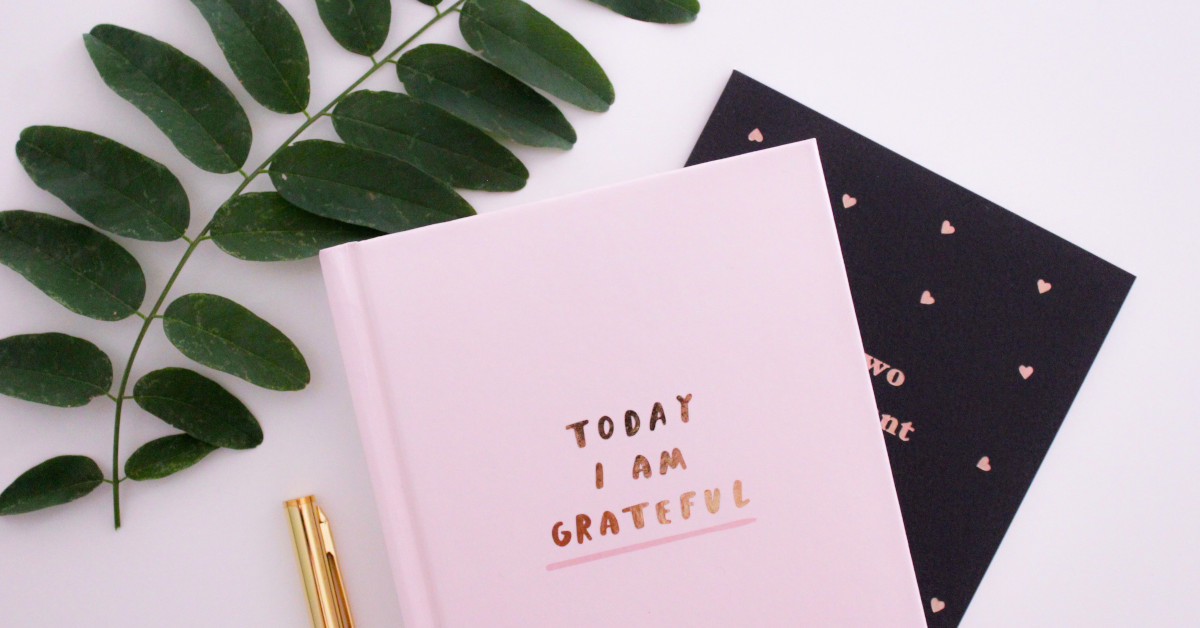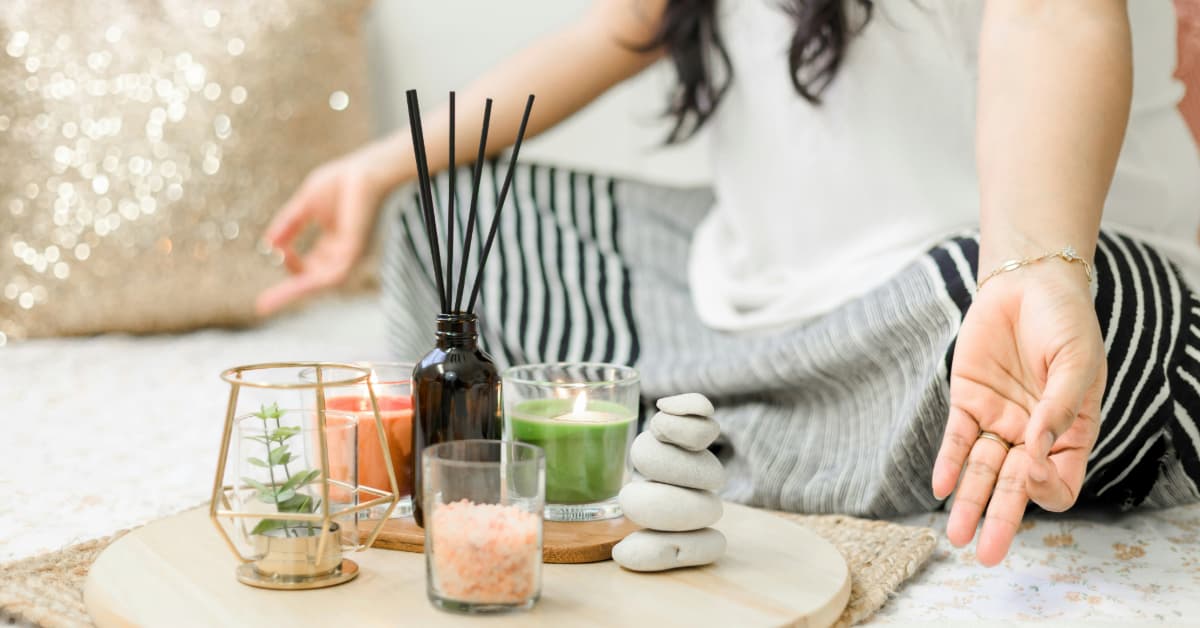Discover the benefits of meditation, how to meditate daily, and tips for less stress, better sleep, and a calmer, more focused mind.

Let’s face it – modern life doesn’t exactly come with a “relax” button. Between emails, errands, and whatever fresh chaos the day throws at us, peace and quiet can feel like mythical concepts.
But that’s where meditation can come in. It’s not about silencing your mind forever (impossible), or pretending to be a monk in the mountains. It’s about creating a little breathing room in your brain – one mindful moment at a time.
Whether you’re here for better sleep, less stress, or just a break from your endlessly scrolling thoughts, you’re in the right place.
I’d just like to preface this by saying that meditation isn’t for everyone. And that’s perfectly ok.
Meditation is one of the many tools that are available to you to help with mindfulness and mental and physical wellbeing but if it doesn’t resonate with you, there’s plenty of other things you can try.
- What are the Benefits of Meditation?
- How Meditation Changes the Brain
- How to Meditate: A Beginner-Friendly Guide
- Different Types of Meditation + Techniques to Try
- Meditation to Start the Day
- Meditation for Sleep, Stress + Anxiety
- Meditation vs Yoga: Do You Need Both?
- Mindful Meditation vs Dissociation: What’s the Difference?
- Meditation and Manifestation: Can You Do Both?
- The Best Meditation Apps to Get Started
- Meditation for Beginners: Keep It Simple
- Final Thoughts
What are the Benefits of Meditation?
You’ve probably heard meditation is “good for you”, but what does that actually mean.
It can create measurable shifts in your body, brain, and emotional resilience.
Here’s what science – and thousands of meditators – say it can do.
Physical Benefits
Meditation may not be cardio, but your body absolutely responds to it:
- Improve sleep quality and reduce insomnia – Regular meditation helps calm a racing mind, making it easier to fall asleep and stay asleep.
- Lowers blood pressure – Slowing your breath and focusing the mind can help reduce hypertension over time.
- Supports immune function – Chronic stress suppresses immunity, and meditation helps reduce that stress. Some studies even show enhanced immune response in regular practitioners.
- Relieves chronic pain – Mindfulness techniques have been shown to help manage pain perception and increase pain tolerance.
- Reduces muscle tension and physical stress symptoms – Meditation helps activate the parasympathetic nervous system (aka: rest and digest mode), which reduces the physical sensations of stress.
Mental Health and Emotional Benefits
This is where meditation really shines – helping you feel more like yourself again:
- Reduces stress and anxiety – Probably the most well-known benefit. Meditation helps you create space between yourself and your thoughts.
- Improves focus and concentration – Studies show that meditation enhances attention span, working memory, and even productivity.
- Boosts emotional regulation – Regular practice helps you respond rather than react, making it easier to handle triggers without spiralling.
- Enhances mood and overall wellbeing – Meditation increases activity in brain regions linked to happiness, satisfaction, and emotional balance.
- Decreases symptoms of depression – Especially when paired with other forms of mental health support, mindfulness meditation can help reduce negative rumination and improve mental clarity.
- Increases self-awareness and compassion – Whether through loving-kindness meditation (more on that later), or just noticing your own thoughts, meditation helps build a better relationship with yourself (and others).
How Meditation Changes the Brain
This isn’t just a feel-good practice – it’s brain-changing.
Research shows that regular meditation shrinks the amygdala (your stress alarm) and strengthens the prefrontal cortex (your thoughtful decision-maker).
Translation? You get better at staying calm, handling overwhelm, and not snapping at the next person who sends “per my last email”.
How to Meditate: A Beginner-Friendly Guide
If you’re wondering how to start meditation without feeling awkward or confused – here’s a simple method.
Step-by-Step: How to Meditate:
- Find a quiet spot. Sit or lie down somewhere comfortable.
- Close your eyes. Or keep them gently focused on one spot.
- Focus on your breath. Inhale slowly, exhale even slower (just don’t do it so slow you end up gasping for air).
- Notice when your mind wanders. (It will). Just gently return to your breath.
- Start with 5 minutes. Build from there as it feels right.
- That’s it. You don’t need to empty your mind, just notice what’s happening without getting dragged into it.
- Tip: Try a 5 minute meditation first thing in the morning or after work to reset your day.
Different Types of Meditation + Techniques to Try
There’s no one-size-fits-all when it comes to meditation – and that’s the beauty of it.
Whether you’re someone who loves structure or someone who can’t sit still for more than 30 seconds (hi), there’s a style out there that suits.
Here are a few popular types of mediation to explore:
- Mindfulness meditation – Simply paying attention to your breath, body, or thoughts in the present moment. Great for beginners.
- Loving-kindness (Metta) meditation – Involves sending compassion to yourself and others. Heart-warming and weirdly powerful.
- Body scan meditation – Helps you tune into physical sensations, release tension, and reconnect with your body. (This is my personal favourite way to meditate as it gives me something tangible to focus on).
- Guided meditation – Think: peaceful beach scenes, calming voices, or imagining your ideal future. Perfect if silent meditation feels intimidating.
- Mantra meditation – Repeating a word or phrase (like “peace” or “I am calm”) to help anchor your focus.
- Breathwork meditation – Uses conscious breathing patterns to shift your state and energy.
There are plenty more out there – form walking meditations to sound baths.
Try a few and see what clicks for you.
Meditation to Start the Day
A morning meditation practice can help set the tone for your whole day.
Just a few quiet minutes before you dive into emails, errands, and espresso can make all the difference.
Try combining it with affirmations, like:
- “I move through today with calm and clarity.”
- “I am grounded, focused, and present.”
It’s a small shift that creates big ripple effects.

Meditation for Sleep, Stress + Anxiety
Let’s be honest – winding down at night isn’t always easy. Between racing thoughts and tomorrow’s to-do list, sometimes you brain just won’t shut up.
That’s where meditation for sleep comes in. Techniques like deep breathing, body scans, or guided visualisations can help calm your nervous system and ease you into rest.
Similarly, meditation for anxiety focuses on grounding you in the present moment. Instead of spiralling, you gently return to your breath.
And meditation for stress? It’s your go-to when everything feels like too much. Five minutes can help you shift from chaos to calm.
Meditation vs Yoga: Do You Need Both?
Great question. Meditation trains the mind. Yoga trains the body and breath.
You don’t need both – but they can complement each other beautifully. If sitting still feels impossible, gentle yoga can help your body settle before a meditation session.
Mindful Meditation vs Dissociation: What’s the Difference?
This is an important distinction. Mindful meditation is about being present – observing your thoughts, emotions, and body without judgement.
Dissociation, on the other hand, is a disconnect from your surroundings or self. If meditation ever starts to feel like zoning out or floating away, it’s worth grounding yourself with techniques like touch (holding an object) or sound (a chime or bell).
Equally, if you find yourself frequently dissociating and especially while meditating, but you actually benefit from that mental time away, then you do you!
Different things work for everyone. And if a bit of mental space and time away is what you need to feel better the rest of the time, then go for it.
Meditation and Manifestation: Can You Do Both?
Absolutely. In fact, meditation enhances manifestation.
Why? Because it helps you get clear on what you want – and clear on the beliefs and habits that might be in the way.
Try this:
- Meditate to calm your mind.
- Visualise your intention.
- Use meditation affirmations like:
- “I trust the timing of my life.”
- “I attract what aligns with my highest self.”
Or any other that sound more like you and less like an affirmation textbook. Just go with what feels right for you.
It’s important to start small with manifesting – even when you’re using mediation to supercharge your affirmations.
Start small: like inner peace before payday instead of a winning lottery ticket (by all means, manifest both!)

The Best Meditation Apps to Get Started
Sometimes a little guidance helps – and that’s where apps come in
A few of the best meditation apps to try:
- Headspace – Friendly, structured, and great for beginners – there’s also so much more than just meditating guidance on this app.
- Calm – Gorgeous visuals, calming voiceovers, perfect for sleep
- Insight Timer – Loads of free sessions (without aggressive upselling)
- Balance – Personalised meditation journeys
Look for features like guided meditations, affirmations, sleep stories, or even tracks for manifestation.
You can also find some great guided meditations on YouTube.
Meditation for Beginners: Keep It Simple
Here’s your permission slip: you don’t need to be “good” at meditation. You don’t even need to love it straight away. Just keep showing up.
Start small. Stay consistent. And when you mind wanders (trust me it will), just do your best to get back in the moment. That’s the practice.
Think of it like brushing your teeth – but for your brain.
Final Thoughts
Meditation isn’t about doing more – it’s about doing less, better.
It’s a way to pause, breathe, and come back to yourself. No perfection required.
So whether you’re in it for better sleep, less stress, sharper focus, or a little more peace in your day-to-day – just give it a go. Even five minutes of meditation counts.
Your nervous system will thank you.
And if your brain tries to tell you it’s cringe and awkward – just acknowledge it and tell you brain to get a grip, it’s not as awkward as what it might initially feel like.





